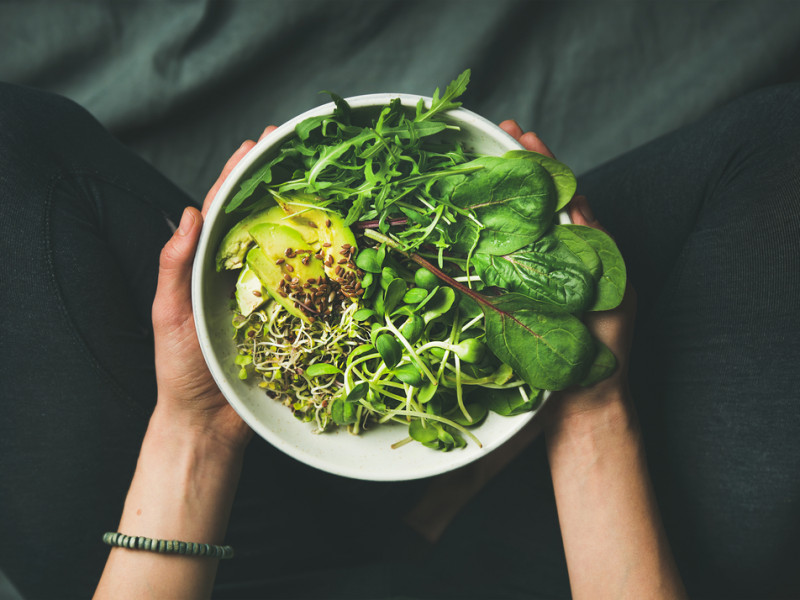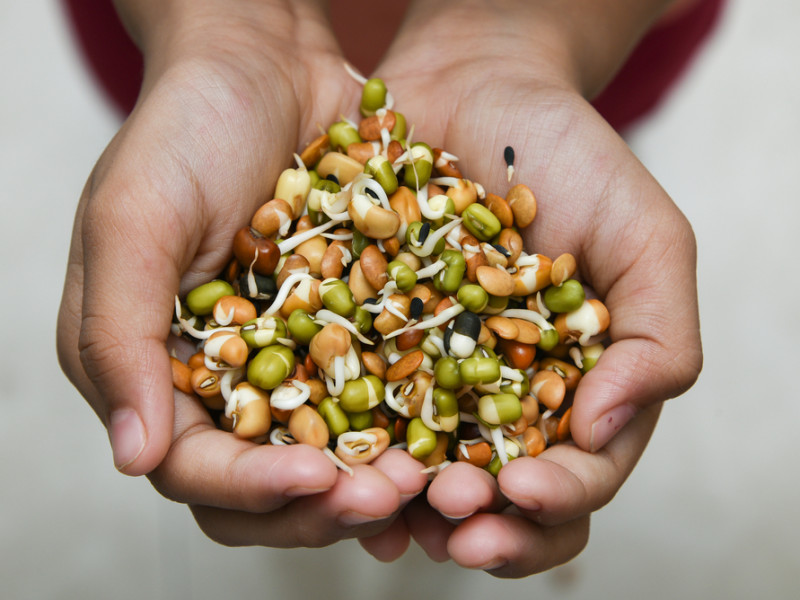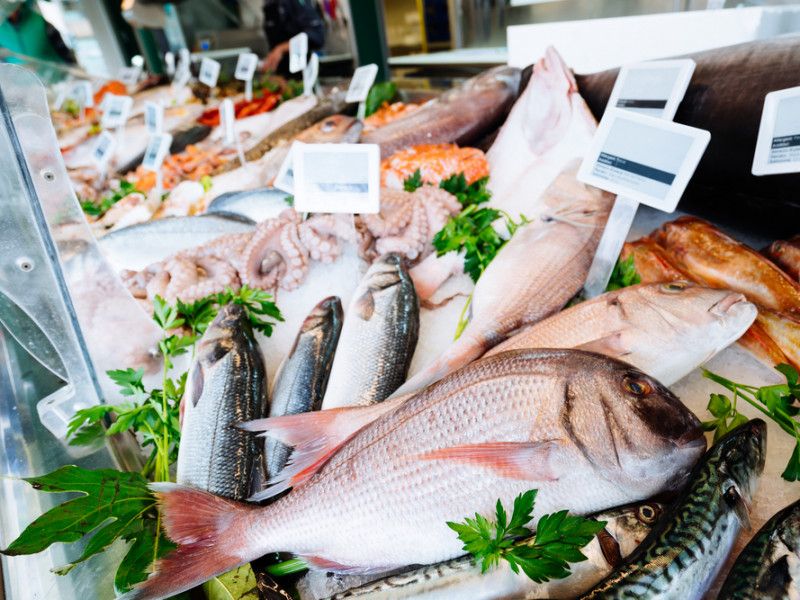Not to be Missed Food Trends of 2018
The start of a New Year is often a time of change for many people, whether it be new jobs, new resolutions or new healthy habits. It is also a time when new trends are often seen and set for the year ahead and when it comes to food and nutrition there is no exception. Food trends often develop from a change of attitudes amongst communities and the consumer on mass. These changes may be in relation to health and health priorities, the environment or even just because it’s seen as ‘cool’. So what food and nutrition trends can we expect to see in 2018?

Vegetarianism & veganism
Supermarkets and restaurants are now far more established in providing foods to cater for different eating choices including, gluten free, GMO free, vegan and vegetarian. The latter two ‘trends’ have become increasingly popular as accessibility of these types of foods has grown and many people state veganism as the biggest food trend for 2018. Some statistics show that veganism has increased by over 350% in England over the last decade and continues to increase globally. This increase is mainly driven by the younger population and those choosing this manner of eating due to the environment, animal welfare and the perception that it is ‘the healthy choice’. As the vegan trend takes hold, vegan based food companies producing solely vegan foods are increasing, so expect to see new brands within the vegan market appear in shops near you this year.

Plant based proteins
With veganism on the increase, it is therefore no surprise that plant based foods, especially plant based proteins, are on the increase in popularity too. Foods such as quinoa, tofu, legumes, soy, chai seeds, and nuts are becoming far more mainstream now and can often be seen on many a restaurant menu too. Many of these foods that not so long ago were perceived as boring and tasteless have had a makeover and with a little creativity and vision with some well chosen spices and seasoning thrown in too, these foods can be transformed into a culinary taste explosion. Add seeds to salads, dressings and cereals, add beans and tofu to casseroles, stews and soups, nuts make a great healthy snack or a good addition to home made flapjack and quinoa can be used as an alternative to rice or pasta and served hot or cold. So when it comes to plant based proteins there are plenty of options to be had.
Gut friendly food
The importance of a healthy gut and the impact this has on overall health and immunity is becoming better known. This is causing consumers to specifically choose foods that are known to support and improve gut health and this is definitely going to continue to be a big trend in 2018. Foods that specifically have that gut friendly reputation are those that include prebiotics. Prebiotics help to keep your gut healthy by stimulating the growth and activity of ‘good’ bacteria in the digestive tract. This is especially important when it comes to immunity as, 70-80% of your immune function is found in the digestive system, so keeping your gut healthy is essential if you want a strong immune system. With all these winter germs and ‘Aussie’ flu around what better time than now to start making sure prebiotic foods are a good part of your diet.
Many foods contain natural prebiotics including onions, pure maple syrup, raw garlic, sauerkraut, beans and artichoke. Consuming these will have a positive effect on the good bacteria in your gut and help promote better digestve health.

Reduction in plastic food wrapping
Food packaging is an increasing and growing concern in relation to the environment, especially when that packaging is plastic. Plastic packaging is causing a worldwide rubbish problem and in the last year certain movements have tried to address this problem. Introducing a charge for plastic bags has had an impact, but far more is needed if the environmental impact is going to be addressed fully. Many food manufacturers have already changed their packaging from plastic to other materials, but you only have to take a trip to your local supermarket to see that excessive and unnecessary food packaging is still been used. As consumers become more knowledgeable on the negative environmental repercussions that plastic packaging has, many will start to make active choices to avoid brands that use plastic or excessive plastic packaging. This will force manufacturers in 2018 to increasingly use different and more environmentally friendly packaging for their food products, so look out for some changes here.
Reduced sugar
Reducing sugar in foods is not a new trend for 2018 as it has been one of the most publicized issues over the last two years. This sweet, addictive, energy giver known as sugar has become one of the most vilified ingredients in recent food history and this is not likely to change anytime soon, especially with the health conditions that its consumption is associated with. As a nation we consume 50% more sugar than the guidelines recommend, with the teenage population being the worst culprits. With evidence showing that high sugar consumption is directly linked to obesity, which then increases risks of Type II diabetes and heart disease, it is no surprise that there is a big movement to reduce sugar content in foods.
For people who eat more of a processed diet, it is more difficult to track exactly how much sugar is consumed daily, as so much sugar is hidden in foods such as sauces, drinks and desserts. Making these foods yourself means you will automatically consume less sugar as there is no need to put sugar in homemade sauces and home baking recipes can often be adjusted to add only half the amount of sugar specified in the recipe. Making your own flavoured soft drinks using fruits and natural flavourings and colourings will also cut down sugar intake considerably, especially in the younger population who are big consumers of soft drinks. In simple terms we should all be aiming to consume no more than 6 teaspoons of sugar a day, which is about 24grams. So making small changes like those above, can really have a positive impact on overall health. Look out for a variety of brands further reducing sugar in their recipes in 2018.
Localised Ingredients
More and more people are aware nowadays of the carbon footprint their food can have and the impact this has on the environment and are therefore making active choices to eat more localised foods and ingredients where possible. This trend to eat more localised foods will continue to grow in 2018 as more and more restaurants choose to advertise this claim on their menus knowing that it is something consumers increasingly want to see. Not all foods can be grown or produced locally here in the UK, but if everyone decided to change even a few ingredients to ones that were produced locally, or at least in the UK where possible, it would contribute to an overall reduced carbon footprint and a good choice for the environment.
Food Transparency
Consumers are increasingly wanting more food transparency and want to know more about the foods they choose to eat such as where has it come from, where was it grown and raised etc., which is why one trend we will be seeing more of in 2018 is increased specific food labelling with more brands showing labelling such as GMO free, Fair Trade, Responsibly Grown, Raised and Sourced. Manufacturers know that by having labels such as these on their brands wherever possible, will help increase popularity of those brands amongst consumers and thus be good for business. Many of your favorite brands could therefore well be striving for this change this year so watch out for some positive label changes.

Fish
Considering the UK is an Island, as a population we are not a great nation of fish lovers when it comes to eating them. However this may be changing in 2018 with the popularity of fish showing some increases, most probably due to more people adopting meat-free diets or reducing its intake and the more publicized health benefits of adding fish to the menu. We are seeing more demand for ‘wild’ fish such as wild salmon as consumers are increasingly aware that wild over farmed fish has superior health benefits such as higher omega 3 fatty acids (in the case of oily fish). Fish is also a really convenient and healthy fast food and an excellent protein source. Most fish can be easily cooked by just wrapping in tin foil and placing in the oven. To add a bit of flavour consider chopping some spring onions, fresh ginger, fresh chilli (mild) and placing some lemon or lime slices on top of the fish. Wrap it all in tin foil and cook in the oven for the specified time. This recipe works well for most fish varieties and is so easy and healthy. Not only will it tickle your taste buds but it will also mean you are right on trend!
Whatever trend you may be following this year or whatever goals you have set yourself make it work for you!
References:
- Public Health England – Sugar Reduction, Responding to the Challenge, (2014)
- Prebiotics & probiotics: Are they functional foods? 2000. The American Journal of Clinical Nutrition
- www.NutritionInsight.com :
- https://www.packagingnews.co.uk/top-story/mintel-packaging-predictions-highlight-food-waste-circular-economy-13-12-2017



